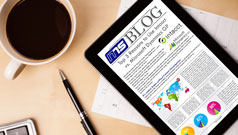
4 Major Buy Decisions Between Intacct & Dynamics GP

The following are 4 major functionality differences between Intacct and Microsoft Dynamics GP to help you choose which software will be right for your operations.
#1: On-Premise Owned vs Hosted Owned vs Hosted SaaS vs Cloud SaaS
One of the first decisions to make when acquiring a new accounting software is whether you want to own it and have it installed on a company owned server; whether you want to own it, but have it installed on a Host provider’s server; whether you want a hosted SaaS (Software as a Service) license where you are still involved with upgrades that are on an approximate 2-year cycle with your Host provider; or whether you want a cloud SaaS license where you do not have to worry about the upgrades. Selecting Dynamics GP will provide you with the choices between on-premise owned, hosted owned, and hosted SaaS. With the on-premise choice, you will need to purchase and maintain the servers, operating software, accounting software, supporting software, service packs, and upgrades. This option also requires more preparation time before an implementation can begin. Selecting Intacct will provide browser access to your accounting software, and you will not have to install any software. In addition, you will receive 4 upgrades per year without having to be involved. Learn more…
#2: Determine Your Accounting Functionality Needs
A challenging task will be to determine the functionality you will need within your accounting software. For the most part, both Intacct and Microsoft Dynamics GP can provide the functionality you will need. The question to be answered is, How does each of the accounting software fulfill your functionality needs? For example: you need stunning dashboards. With Intacct the business user can build their own reports, graphs, and dashboards. With Dynamics GP you will need Business Analyzer or SQL Server Reporting Services (SSRS), and you will need someone who can program in SQL to build the data sources for the reports and graphs. Another example: Dynamics GP includes fixed assets within their product. Intacct uses 3rd party fixed assets to accommodate the functionality need. It is important to determine all your needs so you will know which software include 3rd party products, integrations, or customizations.
#3: Reports, Graphs, and Dashboards
It is important to determine the data that needs to be presented in the reports, graphs, and dashboards. Intacct and Dynamics GP accounting architecture are very different. Intacct uses a chart of account (assets, liabilities, equity, revenue, expenses) and 11 dimensions. Dynamics GP uses one chart of account (COA) that can be divided into segments that represent the departments, locations, companies, etc. There are two significant differences between Intacct and Dynamics GP accounting architecture. • The first difference is the way account numbers are setup. Intacct does not require you to pre-build all the account number combinations because the COA and dimensions are each their own field, and each field contains a list of values that are relevant to the specific field. With Dynamics GP all the combinations need to be pre-built. For example: in a COA with 50 account numbers and a location segment that has 3 locations, the number of GL accounts will be 50 x 3 or 150 account numbers. However, Intacct will have 50 accounts in the drop-down list for the COA field and 3 locations in the drop-down list for the Location dimension. Therefore, with Intacct you do not need as may GL account numbers. • The second difference involves what accounting data is available for the reporting criteria within the financial report writing tools. Dynamics GP is limited to the data within the segments. For example: when Dynamics GP has a two-segment account number where one segment is the COAs and the other segment is the Locations, the reports can show comparative Profit & Loss reports between the locations, but it cannot show comparative reports by departments, projects, vendors, customers, employees, items, class, etc. However, Intacct can provide comparative reports and graphs for each of the dimensions. It can also compare the department dimension by their location dimension with its matrix reporting functionality, and it can include data on the reports that reside with the master records. For example: when the department dimension includes the manager’s name, Intacct can also display the manager’s name on the financial reports.
#4: Multi-Entity vs Single Entity
An important architecture design difference to consider when selecting between Intacct and Microsoft Dynamics GP is to determine how many entities/companies you will need within the accounting software. Intacct provides you the ability to use a single entity, a multi-entity shared, and a multi-entity distributed. Dynamics GP only provides you with a single entity option. This architecture is important when you need more than a single entity. There are multiple advantages to the multi-entity environment. One such advantage is that within Intacct’s multi-entity shared environment, the COA and dimensions are shared between the entities, and each entity is self-contained when determining which users have access rights.
Contact us to help you determine which accounting software is best for your company.

